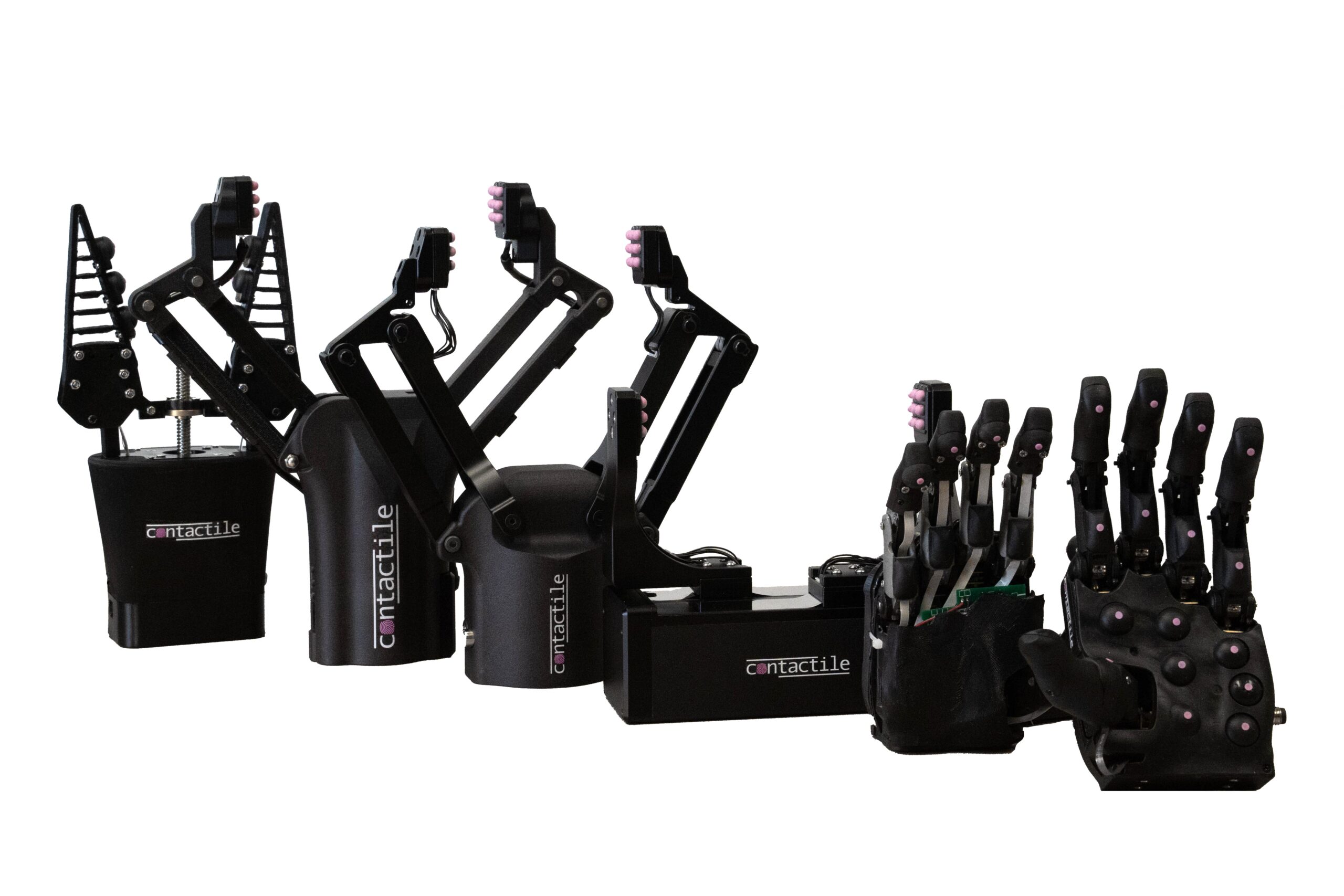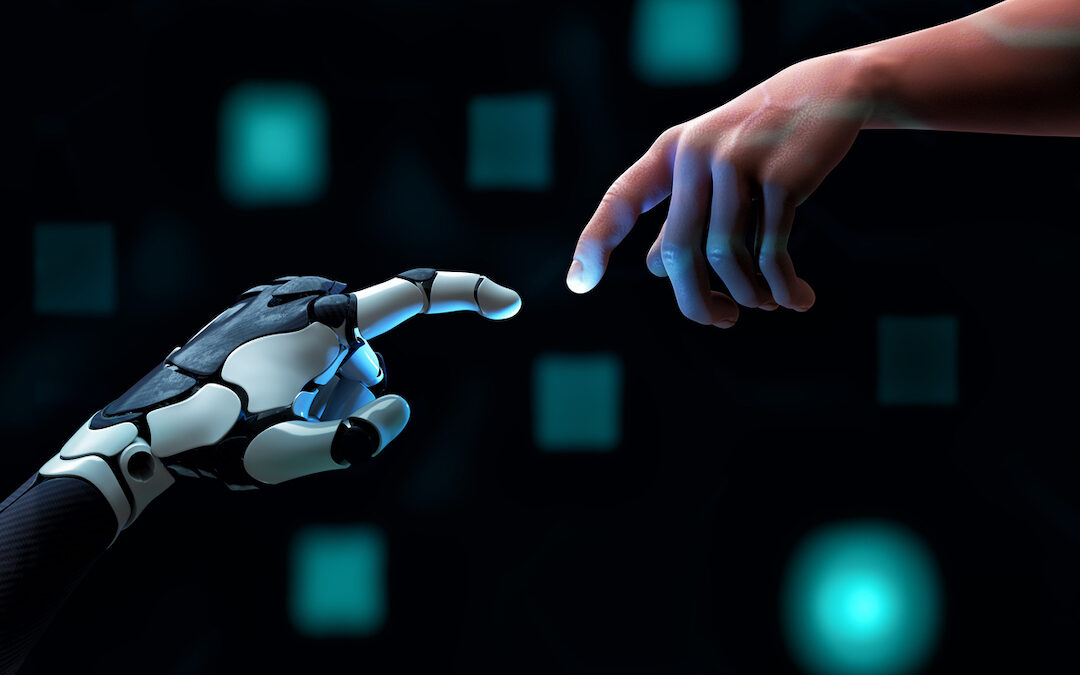In the rapidly evolving landscape of robotics, Contactile, an Australian start-up is making waves with its groundbreaking approach to robotic perception and dexterity.
Contactile has taken on the challenge of bridging the gap between the mechanical and the tactile, striving to endow robots with a ‘human’ sense of touch. This technology is not just an advancement; it’s a leap towards the future of automation and robotics.

From Left to Right: Stephen Redmond (Co-Founder – (2018-2022), Heba Khamis (Co-Founder), Benjamin Xia (Co-Founder, CTO). Image: supplied.
The dilemma at hand
The difficulty in creating a ‘human’ sense of touch in robots lies in replicating our dexterity and fine motor skills. Robots may have advantages when it comes to efficiency, but humans understand that grasping and grabbing objects requires different grips and uses of force – something a robot lacks. Contactile hopes to change this.
At the heart of the company’s innovation is the development of advanced robotic grippers capable of sensing and adapting to the physical properties of the objects they handle. Unlike traditional robots, which rely on pre-programmed pressure and grip patterns, Contactile’s robots can adjust their grip in real-time, based on the feedback received from tactile sensors.
This mimics the human ability to gauge the texture, weight, and slipperiness of objects, ensuring a gentle yet firm grip that can handle a wide variety of materials without causing damage.
The company’s founders, drawn together by their shared passion for robotics and artificial intelligence, have leveraged their expertise in mechanical engineering, machine learning, and sensor technology to achieve this feat. By combining optical sensors with advanced algorithms, they have created a system that can learn and improve over time, enhancing its ability to understand and predict the physical characteristics of objects.
 Contactile Gripper Technology. Image: supplied.
Contactile Gripper Technology. Image: supplied.
A robotic future
What sets Contactile apart is not just their technological prowess, but the vision that drives its innovation. The founders’ mission and values clearly align with what they seek to achieve with respect to robot dexterity. As stated on their website, “our mission is to give robots a human sense of touch so that they can use their hands with extraordinary dexterity just as we (Humans) do.”
As Contactile co-founder Heba Khamis says: “the inspiration for developing artificial tactile sensors came from studying the human sense of touch in a multidisciplinary research project. The holy grail of general purpose robotics is to replicate human dexterity, and humans rely heavily on their sense of touch during object manipulation.
“So, we took inspiration from nature and developed an artificial tactile sensor with features that mimic the biomechanics of the human fingertip. Contactile is all about giving robots a human sense of touch to enable robotic dexterity. Our artificial sensors can measure the same tactile parameters that humans rely on for our dexterity.”
Contactile’s technology promises to make robots more versatile, efficient and, crucially, safer to work alongside humans. This is particularly relevant in industries such as manufacturing, warehousing and healthcare, where precision and delicacy are often required. This adaptive grip technology has the potential to revolutionise the way robots are utilised across various sectors.
Implications and applications of Contactile
According to Khamis, there are far-reaching applications of Contactile. She says, “while current robotics are really versatile, once programmed, they are pretty much constrained to perform a particular task over and over again. We typically see robots being used in high-volume manufacturing where they perform highly repetitive tasks with little or no variability.
“Our tactile sensor and autonomous gripping technology would have tremendous value in automating tasks that have a high degree of variability or where the robotic system is required to perform multiple potentially unrelated manipulation tasks.
“Some examples are fulfilling grocery orders which contain highly variable product mixes including fresh produce, packaged goods and fridge and freezer items, autonomous maintenance in remote areas where the robot might be required to handle and manipulate parts that could be in any state – imagine turning a gas valve when it has rusted. The implications of this technology are extremely far-reaching!”
In manufacturing, robots equipped with Contactile’s grippers could handle delicate components with greater precision, reducing waste and improving product quality. In healthcare, robotic assistants could perform tasks such as administering injections or handling fragile equipment, improving patient care and freeing up human staff for more complex duties.
Beyond its immediate applications, Contactile’s work represents a significant step forward in the quest for robots that can truly interact with the physical world in a human-like manner. As robots become more integrated into our daily lives, the ability to handle objects with care and precision will be crucial in ensuring they can be trusted to perform a wide range of tasks safely and effectively.
The journey of Contactile is a testament to the power of innovation and the potential of robotics to enhance our world. As the company continues to refine and expand its technology, the future of robotics looks increasingly human – not in appearance, but in touch, sensitivity and adaptability.
In bringing the human sense of touch to robots, Contactile is not just advancing technology; they are redefining the boundaries of what robots can do and opening up new possibilities for human-robot collaboration. To read more about Contactile and their extremely impressive work, go to https://contactile.com/.
To read similar stories like this one about technology and all Business related events happening in Australia go to AusBiz.com.

